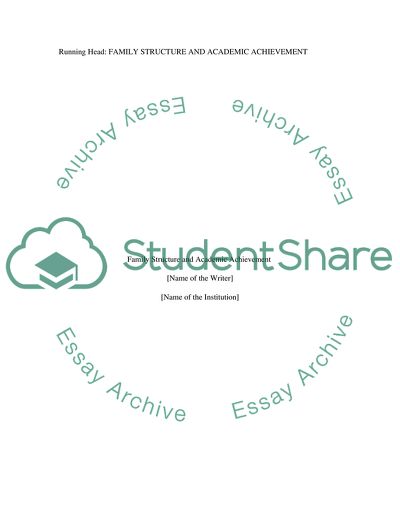Cite this document
(“Family Structure and Academic Achievement: Single Parent-Families Research Paper”, n.d.)
Family Structure and Academic Achievement: Single Parent-Families Research Paper. Retrieved from https://studentshare.org/social-science/1710497-family-structure-and-academic-achievement-single-parent-families-versus-two-parent-families
Family Structure and Academic Achievement: Single Parent-Families Research Paper. Retrieved from https://studentshare.org/social-science/1710497-family-structure-and-academic-achievement-single-parent-families-versus-two-parent-families
(Family Structure and Academic Achievement: Single Parent-Families Research Paper)
Family Structure and Academic Achievement: Single Parent-Families Research Paper. https://studentshare.org/social-science/1710497-family-structure-and-academic-achievement-single-parent-families-versus-two-parent-families.
Family Structure and Academic Achievement: Single Parent-Families Research Paper. https://studentshare.org/social-science/1710497-family-structure-and-academic-achievement-single-parent-families-versus-two-parent-families.
“Family Structure and Academic Achievement: Single Parent-Families Research Paper”, n.d. https://studentshare.org/social-science/1710497-family-structure-and-academic-achievement-single-parent-families-versus-two-parent-families.


